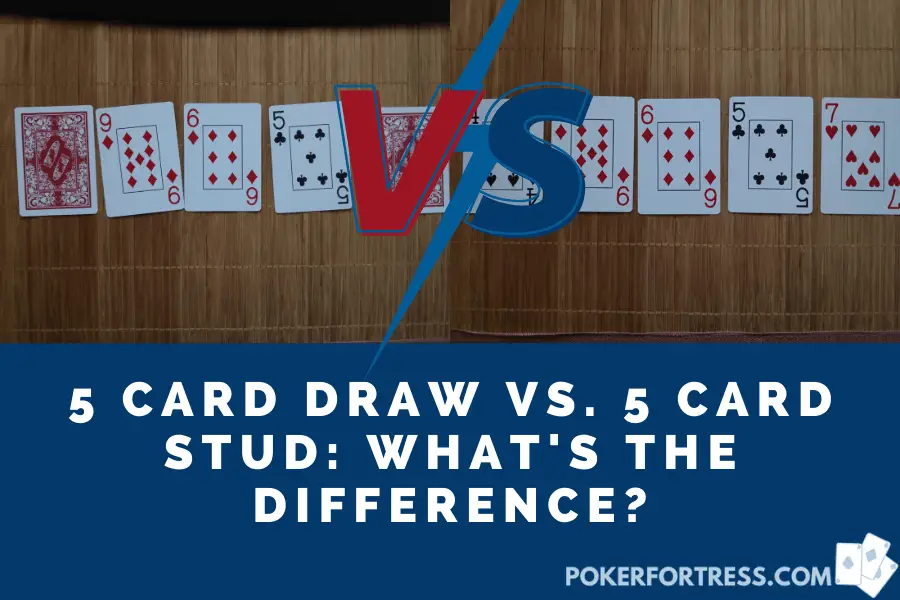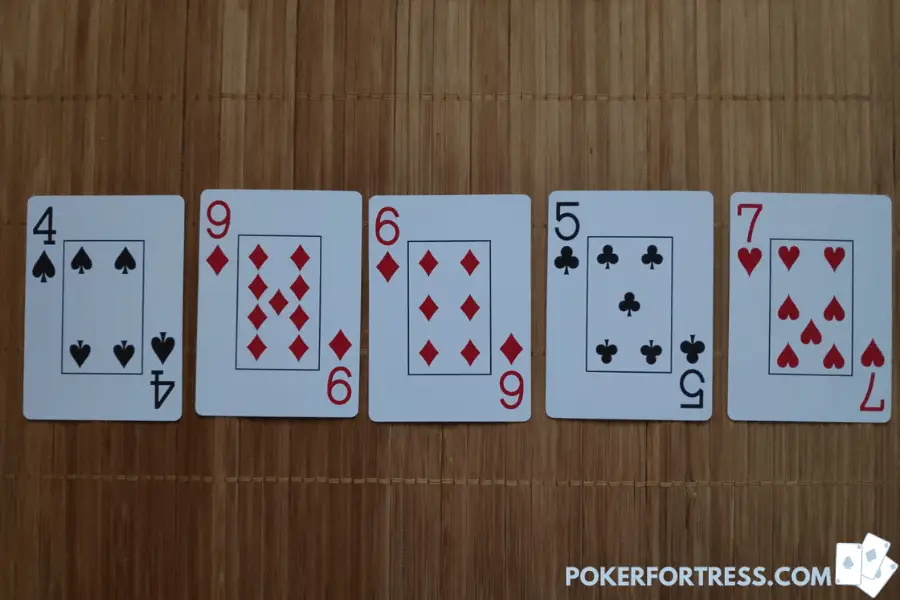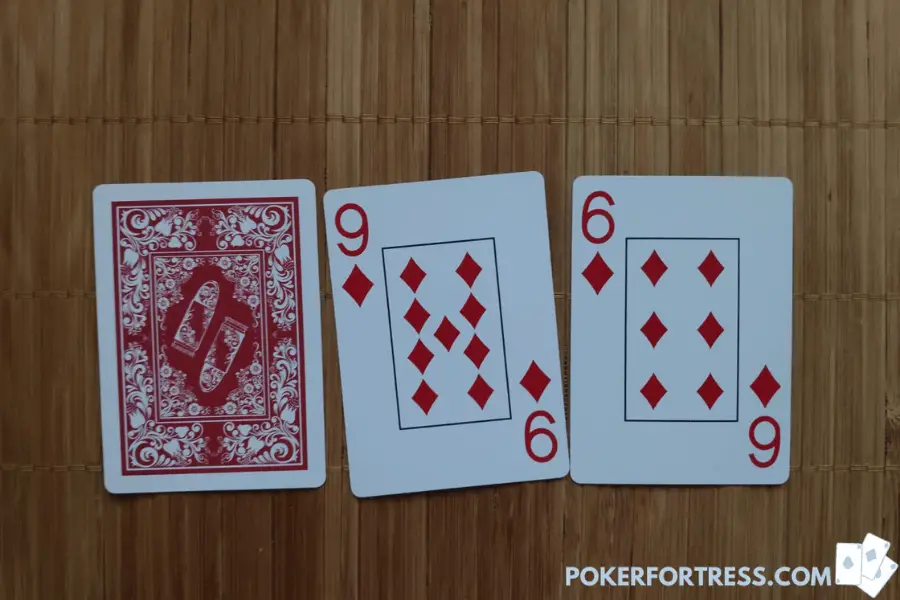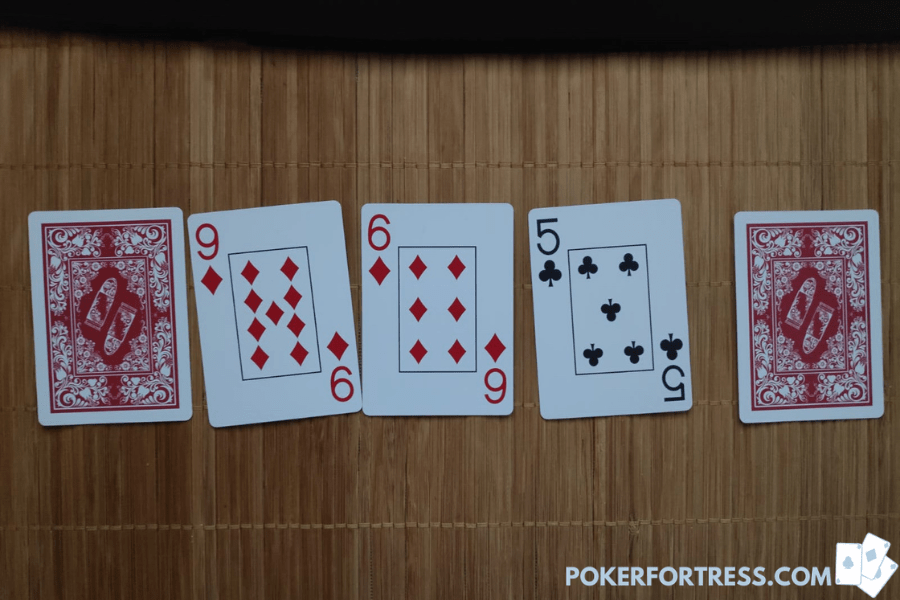You are with your friends for an overnight stay and decided you want to play Poker, but which variant? You see, casual players only refer to this card game as Poker, but there are different variations to this game, such as the 5 Card Draw and 5 Card Stud. Both have very different sets of rules, so before you put your poker face on, let’s be sure that you’re playing the right game.

So, what’s the difference between 5 Card Draw and 5 Card Stud?
- In 5 Card Draw, every player gets all five cards at the start of the game. Each player will then have a chance to replace their cards to chase for a better hand.
- In 5 Card Stud, each player initially gets two cards; one face-down and one face-up. It takes four rounds to draw all the cards, and the player with the best hand moves first.
The gameplay for both variations are very different and require contrasting strategic approaches. Let’s discuss these variations separately to help you better understand the differences between the 5 Card Draw and 5 Card Stud.
The 5 Card Draw
The 5 Card Draw is one of the oldest variations of Poker. It became popular in Europe back in the 17th Century and the United States in the 18th Century. It was once the most popular variation of Poker but was overtaken by more aggressive gameplay, leaving only a handful of professionals still playing this game.

Playing the 5 Card Draw is simple, but winning it requires a perfect strategy with just the right amount of luck.
It has a bit of a learning curve since mainstream Poker variations let you have a better evaluation of the board through community cards or face-up cards. However, mastering the unique gameplay of the 5 Card Draw can make it an exciting casual game with friends.
Rules of the 5 Card Draw
Just like most Poker variations, the 5 Card Draw needs a standard 52-card deck and chips for ante. You can play it with two to six players, but to make things interesting, you’ll need at least three players on the table.
In this variation, every player needs to agree to a predetermined initial ante before distributing the cards. On the 2nd round, the ante is twice the amount of the initial bet. If every player agrees to an initial amount of $5, the 2nd round ante must be $10.
Rotating the dealer depends on what was agreed upon by the players. In 5 Card Draw, the small blind is the player on the left side of the dealer, while the big blind is the player on the left side of the small blind.
In a game where the dealer remains the same, the small blind for the next game will be the previous game’s big blind, and the person on his left side will play the next game’s big blind.
Once the blinds are in place, the dealer will draw one card to each player, face-down until all players have five cards. The remainder of the deck or the “draw deck” should be placed back on the table near the dealer.
The players will inspect their cards to evaluate their current hand before placing their bets. The person on the left side of the big blind always makes the first move. Once all the players have made their moves and bets are into the pot, each player will have a chance to discard up to three cards. The dealer will replace the discarded cards and draw an equal number of new cards from the draw deck.
After replacing the discarded cards with new ones, each player will inspect their new cards to see if they received a better hand. The first to move is still the person on the left side of the big blind. Once every player has made their move, the remaining players will show their hand, and the one who has the best hand wins the pot.
Basic Strategies in a 5 Card Draw
The 5 Card Draw is notorious for being the most strategic variation of Poker. Since there are no community cards in play, and you are clueless with other players’ cards, evaluation of the table can be challenging. This unique gameplay makes the combination of a solid strategy and good poker face vital in ensuring that you’ll bring home the pot!
Strategic Discarding of Cards
Each player only has one chance to discard up to 3 cards, and it is the most crucial part of the game because this determines your chances of winning. Of course, you can still use basic Poker strategies in 5 Card Draw, but knowing what to discard dictates the techniques that you can use to win the game. It is also the only data that other players can use to determine how strong your hand is.
Here are the basics of discarding in 5 Card Draw:
High Card
The majority of 5 Card Draw games end with only a high card. If you have a high card, possibly an Ace, a King, or both, discarding three cards is quintessential to solidifying your hand.
By doing this, you will have better chances of drawing a pair or possibly a much better hand like three of a kind. It also creates the illusion that your hand is somewhat weak.
Pair
In 5 Card Draw, having a pair is considered as a dominant hand. However, deciding whether to discard two or three cards can be tricky because it reveals a lot of information about your hand.
Long story short, the more you drop, the weaker your hand is. If you are using the fast play strategy (betting aggressively), discarding two cards puts you in a better position to bluff.
Three of a Kind
Discarding one card creates an impression that you have a strong hand, and you don’t want this when using the slow play strategy (bet passively, either to improve your hand or to keep other players in when having a really strong hand). You have to carefully weigh all the players, because three of a kind is, most likely, the best hand on the table.
You want to increase the pot as much as you can by playing slow and blend well with other players. Discarding two cards not only creates the illusion of a weak hand but also gives you a better chance to improve your odds.
Partial Straight or Flush
Straights and flushes don’t usually happen in 5 Card Draw. So you have to be very careful when trying to build one. Never discard a pair in exchange for a chance to build a straight or flush, because your chances of having it in this Poker variation are slim to none.
Partials are weak, but you can make good use of it by applying the fast play strategy or manipulate others into thinking that you have the best hand.
Four of a Kind
This is very rare in 5 Card Draw, but you will never know in a game of luck. So if you were lucky enough to draw four of a kind, you need to be very careful not to threaten other players to fold.
Passively placing your bet on the first round will keep everyone in play and increase the pot. It can be very tempting to raise in the first round, but remember that most players in 5 Card Draw will only have a high card or a pair. It may not give them enough confidence to call your raise when made in the first round.
The 5 Card Stud
The 5 Card Stud or Stud Poker is another old variation of Poker, which became popular in the 1860s.
Before the introduction of the 5 Card Stud, all Poker variations were “closed games” — a type of Poker where all the cards are unknown, except to the player who holds the cards. Stud Poker is one of the first “open games” to reach the mainstream. In this variation, 60% to 80% of all the cards on the table are face-up.
There are no community cards in Stud Poker, and the only part of the game where you can use an effective strategy is through the “hole card.” It takes four rounds to complete the 5 Card Stud, giving plenty of room for different plays to occur.
It can be challenging to win on a 5 Card Stud, but playing your “hole card” nicely and applying basic strategies can make you the champ amongst your friends.
Rules of the 5 Card Stud

A 5 Card Stud can be played with a standard 52-card deck or with a stripped deck that only includes high-value cards. You can play it with two to ten players, all having an equal amount of chips for placing bets.
A fixed limit is the preferred betting rule for Stud Poker because it keeps the game fast-paced. Each game starts with a predetermined small bet and a big bet that is usually twice the size of the small bet.
In the 1st and 2nd round, the small bet applies, while the big bet applies to 3rd and 4th round. If all players agree to a 5/10 fixed limit, players can only raise or re-raise by $5 on the first and second round, then $10 on the third and fourth round.
The game starts with the dealer drawing each player a card face-down, also known as a “hole card,” then another card to each player, face-up. Once all players on the table have two cards, the first round begins. In 5 Card Stud, the player with the highest card makes the first move, then the player to his left follows.
Once all bets are in place, the dealer draws another face-up card to each player, then the 2nd round begins. Again, the player with the highest hand should make the first move, then the player on his left side follows. The same process goes for the 3rd round, and it ends with all players having their “hole card” and three cards face-up.
In the 4th round, you can choose between two variations; draw the cards either face-up or face-down. When 1-3-1 Stud Poker is in play, the hole cards are only visible to the player holding it, while the other players use three face-up cards to evaluate the table.
In 1-4 Stud Poker, only one card is not visible from other players, giving everyone enough data to analyze their respective odds.
After placing all bets into the pot, each player will reveal their “hole cards,” starting with the player who has the weakest hand, then the player on his left side follows. The player with the best hand or the last to stay in the game wins the pot.

Basic Strategies in a 5 Card
If you are playing 1-4 Stud Poker, there is very little room to create the impression that you have a strong hand. A visible pair, partial straight, or flushes can be threatening enough for players to fold after the 2nd or 3rd round.
1-3-1 Stud Poker has the same effect, but the 4th round gives you added room to implement better strategies. This open gameplay is the reason why a fixed limit is advisable when playing 5 Card Stud.
Despite the lack of room for bluffing, there are still some basic strategies that you can apply to increase your chances of winning or maximize the pot.
Carefully evaluating other player’s cards and using the right technique, based on your “hole card,” is the secret in mastering the 5 Card Stud.
Fast Play Strategy
Whether you have a weak hand or a royal flush building up, you can implement the fast play. This is a strategy where a player bets aggressively, trying to make other players think that he has the best hand. It is quintessential when playing 5 Card Stud because you can use the visible cards to bluff a strong hand.
If you have a weak hole card, you’ll have two options; either you fold and wait for the next game or use fast play and pretend that you have the best hand on the table.
The goal of this technique is to make everyone feel insecure with their hand and fold before the 4th round is complete. However, this strategy is a two-edged sword, especially in 5 Card Stud, because the 2nd and 3rd round has the potential to make or break your bluff.
If you, on the other hand, have a strong hand, using fast play can still be useful, but you need to be more cautious with your moves. You want to increase the size of the pot as much as you can without threatening other players to fold.
You want to keep everyone in play as long as possible or provoke another player to get into the ring with you for a betting contest.
The most exciting part in 5 Card Stud is when one player calls the raises made by another player who uses fast play, and both are having a visibly strong set of cards.
Slow Play Strategy
You can use this strategy regardless of the hand that you currently have. Slow play is a technique that focuses on maximizing the size of the pot or improving your chances of getting better cards. It starts by passively placing bets, often the minimum, just enough to keep everyone on the table until the 4th round.
When using the slow play strategy on a strong hand, you need to focus on maximizing the size of the pot. It requires great patience because it can be very tempting to go all-in, especially when you have three of a kind on the 2nd or 3rd round.
What you should do is bet passively, keeping everyone in the table and just making the right balance of calls and raises. Remember that when you play aggressively, you risk wasting the opportunity of winning a bigger pot from a good hand.
If you are playing with a weak hand, being passive is the only option that you have to maximize your chances of getting better draws. Slow play is often used by players who don’t like the idea of taking risks but still want to be in the table until the last round.
Of course, there are exceptions to this strategy when used on a weak hand, such as a noticeably superior hand from other players.
More experienced players use a combination of fast and slow play to create better manipulation of the table. You only need to find a balance between both of these strategies, and your friends won’t stand a chance in matching your 5 Card Stud wizardry.
Conclusion
5 Card Draw and 5 Card Stud are two very different Poker variations that require different strategies to win. Being a variation of the same game, both retained the same card rankings and moves.
The presence or absence of data that you can use to evaluate the table may work for or against you, depending on the strategies that you decide to use. Nevertheless, both variations are perfect for testing everyone’s strategic prowess in a casual card game.



